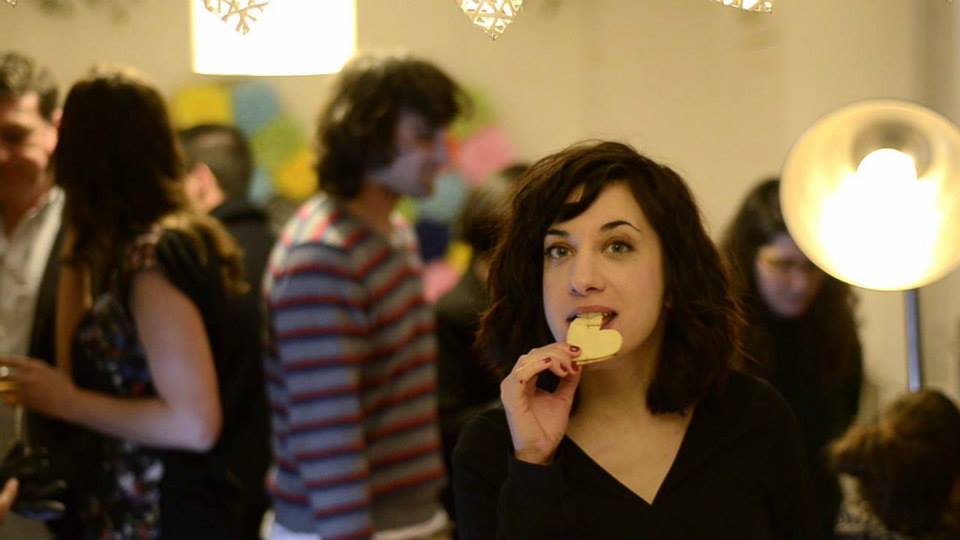How does your space celebrate special occasions?
Photo source: (Desi Mendoza)
Events held by coworking spaces come in all shapes and sizes: they can be formal or relaxed, planned or spontaneous, and there are usually plenty of coworkers thrown into the mix. Sometimes spaces host events for celebrations like Halloween or Valentine's Day; other get-togethers are arranged for special occasions in the space (birthdays, coworker welcome or leaving parties, opening ceremonies, etc.).
Such events or meetups can really help with building a community in the space. They're especially great for the following aspects:
- Introducing members to one another and promoting interaction between them. Events are perfect for encouraging coworkers, new and old, to spend time together and get to know each other.
- Launching products and promoting projects. Some spaces organise events so that their coworkers can showcase their products (textiles, crafts, etc.) or give presentations about their services and projects.
- Promoting the space in the press. Local press often cover interesting events, which helps promote the space in its city or region.
- Improving community ties. Forging bonds and creating an environment of trust takes time. But sharing meals, conversations, good times, etc. can speed up the process.
- Having fun! This makes almost anything easier! ;)
Espacio Arroelo, a coworking space in Pontevedra, Spain offers a great example of this type of event. The space organises a monthly meetup, called "Arroeladas", and held a special Valentine's Day edition called "tai loviu" (I love you in Spanglish). The coworkers decorated the space and companies associated with Arroelo showcased their gift ideas.

Rhythms and rituals are more about establishing patterns than rules
(Alex Hillman, Indy Hall)
Related stories
Global Coworking Trends and Opportunities for 2025
Now well into 2025, the coworking industry continues to demonstrate strong momentum. With demand for coworking spaces remaining steady around the globe, it's clear that coworking is not just enduring—it's thriving. Let’s explore the major trends and opportunities shaping the global coworking landscape this year.
Creating Events that Drive Community Engagement in Coworking Spaces
Community is everything in coworking, but a genuine sense of connection between members doesn’t magically happen overnight or by chance. Often, meaningful relationships take intentionality, effort, and time to build, with events being an effective vehicle for bringing people together around shared interests, goals, and experiences, creating opportunities for collaboration, and a thriving coworking culture. This article looks at creating events that drive community engagement in coworking spaces.
Liz Elam: ‘Community is the number one amenity in coworking spaces’
A household name in the global coworking industry, Liz Elam, is the founder of one of the world’s best coworking event series: GCUC. Liz’s coworking roots began in 2010, when she established Link Coworking – a welcoming, affordable, and professional coworking space – in her hometown of Austin, Texas. Link Coworking achieved incredible success, expanding across three locations and becoming the fourth-largest coworking brand in Austin. It was sold in 2019, making Liz the first woman globally to exit a coworking brand.
Key Takeaways from the Coworking Alliance Summit 2025
Gathering online for the Coworking Alliance Summit last week, members of global coworking alliances, coworking spaces, and community leaders came together to navigate global issues, strengthen ties across the coworking industry, and work collectively towards future goals.
5 Ways to Reduce Noise in Open Offices & Coworking Spaces
Some people like working against a background of noise, while for others it’s their worst work nightmare. The truth is, our relationship with noise depends on our own preferences and the nature of our work.
Key takeaways from the Workspace Design Show 2025
London’s Workspace Design Show is undoubtedly one of the best coworking events of 2025. For one, the exhibition (held at Islington’s Business Design Centre) features a host of innovative and creative workspace design solutions tailored to the needs of modern workplaces.
What Is Workplace Management and Why Does It Matter?
There has always been a need for workplace management – the process of organising and optimising physical spaces, resources, and operations to support people’s needs. But, as 28% of UK working adults were reported to work in a hybrid capacity last autumn (by the Office for National Statistics), the question of ‘why workplace management matters’ is more critical than ever. Let’s look at the workplace management benefits for your operations.
10 Smart Goals for your Coworking Space: How to Set & Achieve Business Objectives
Coworking is synonymous with creativity, collaboration and productivity. Businesses and freelancers love coworking spaces because (by surrounding themselves with fellow workers) they’re more likely to achieve their goals. The coworking environment, while social, is set up to facilitate focused, distraction-free working.
The Best Coworking Events in 2025: Must-Attend Gatherings for Professionals
Managing coworking spaces is an all-encompassing role, often leaving operators, owners, and community managers with little time to focus on personal growth or draw inspiration from others.
10 Award-winning Coworking Space Designs: A Comprehensive Guide
Vibrant, contemporary workspaces create an undeniable ‘wow’ factor. Textured designs and ambient lighting make spaces feel warm and cosy, while natural elements and biophilic design features have literal mood-boosting properties.

